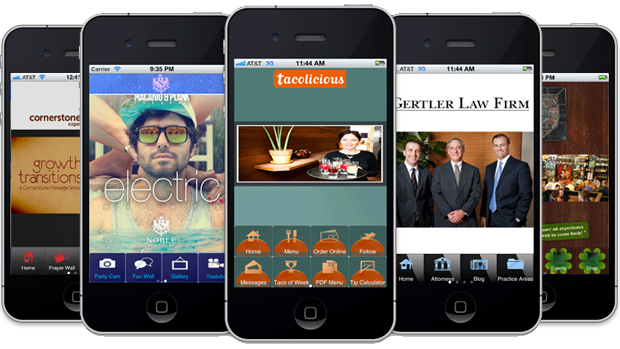Most companies are aware that mobile technologies are a great way to optimize various internal business processes and improve overall efficiency. Sales, marketing, human resources, and customer service are a handful of areas in which a mobile strategy can significantly improve the efficiency with which employees and customers remain engaged with the company. Yet many companies fail to plan properly before developing their enterprise apps. This article offers a five-step plan to developing a mobile application that can deliver the desired results for your organization.

1. Define your Target Audience
Think of your users as an audience. You are not only selling to them, but you are communicating with the end users. It is a window into your company culture, work ethic and level of competence. If you are well-versed with your target audience, you will be able to convey the right brand image to your end users.
You can do this by being deliberate in your choice of:
- Colors and Effects – Is the audience looking for a playful, reliable or personal experience? Choose your design elements to reflect this and communicate a consistent and expected message. Once this has been achieved, you can add layers of expression to achieve customer delight.
- Language Style/Tone of Voice – This basically refers to the choice of words and expressions within your app. As with design elements, use this to achieve the brand persona you want your customers to interact with. How do we want our business to be perceived? Pick three attributes, such as: “Happy, Excited and Social” or “Confident, reliable and friendly,” and craft your language to achieve that persona.
- Customizations – Show the users that you know them. Use birthdays, interests, family connections, and other social data to provide a customized user experience. Don’t overdo it, though, or else you may end up being pushy. Stay within the confines of publicly available or submitted user information.
2. Define the Mobile Application as a Product
You might be wondering why this is not first on the list. Well, which would you rather do, set out to build a product because you’ve fallen in love with an idea, or to build one because you’ve discovered a problem that you can solve? If the latter is your preferred approach, then you are doing things the right way, and that requires first knowing what the problem is (you should have already figured this out at the outset of your business), and knowing who your customers are and what they are like.
In defining the mobile application as a product, you must reflect the findings of your initial market research. A software product is the result of a software development process. In your case, it should be a research and planning process. The result must always reflect the process that produced it, so your app’s features should be based on a sound, thoughtful approach to market research and customer validation.
Even if your product completely disrupts the way people currently do business, you need to know how the current process works. For example, Amazon disrupted book publishing because it knew how books got from the author’s manuscript, through the publishing houses, and finally to the end consumer.
3. Choose Your Mediums and Channels Wisely
The first thing to decide is what platform best suits your well thought-out application. If you’ve been running a website already, a good thing to look at is what devices your users use to visit your website.
Where are your users?
If you are targeting users in emerging economies such as in Africa and Asia, it is worth noting that Android is still the market leader, with up to 44% of market share (Source: TechCrunch). If you’re looking at advanced economies, then platform dominance has become less of an issue, as the iOS and Android are quite neck-to-neck on market share.
What is your revenue model?
If you intend to monetize your mobile app, then be sure to assess the revenue potential of the platforms you’re considering. iOS users tend to make more online purchases and on average spend more per purchase than other device users (Source: Neowin) If you’re considering mobile advertisements, keep in mind that revenue from advertisements tends to be more successful on the Android side as a result of greater market share and hence more eyeballs on the ads (Source: Forbes)
4. Niche or Mainstream?
Finally, you need to know if your users are to be found on the regular app stores or in the more niched, less known woods of online app distribution. Gamers, shoppers and productivity gurus are not all the same type of users. Find out where your users go to get their apps, don’t assume you already know. You may be surprised what you find.
5. Engage, Engage, Engage!
Finally, a mobile app needs to be engaging. This means a number of things:
- Feedback – Make it super easy for your users to tell you how much they like or don’t like your application. Use push notifications and links in the application, and keep an active support email.
- Updates – Don’t let your user get bored with the same content, or frustrated by the same bugs. Release updates as frequently as possible.
- Reach Out – The occasional hello, happy birthday, gift voucher, and a free month of premium usage are all good ways to reach out and show the smiling face of your business behind the application.
Giving your organization a mobile app is an exciting and rewarding journey, more so if done correctly with careful planning and consideration. Decide what benefits your application must provide users in order to be valuable to them. In the end, that is the only guarantee that it will be valuable to you as well, whether your end goal is revenue, users or both.









Comments